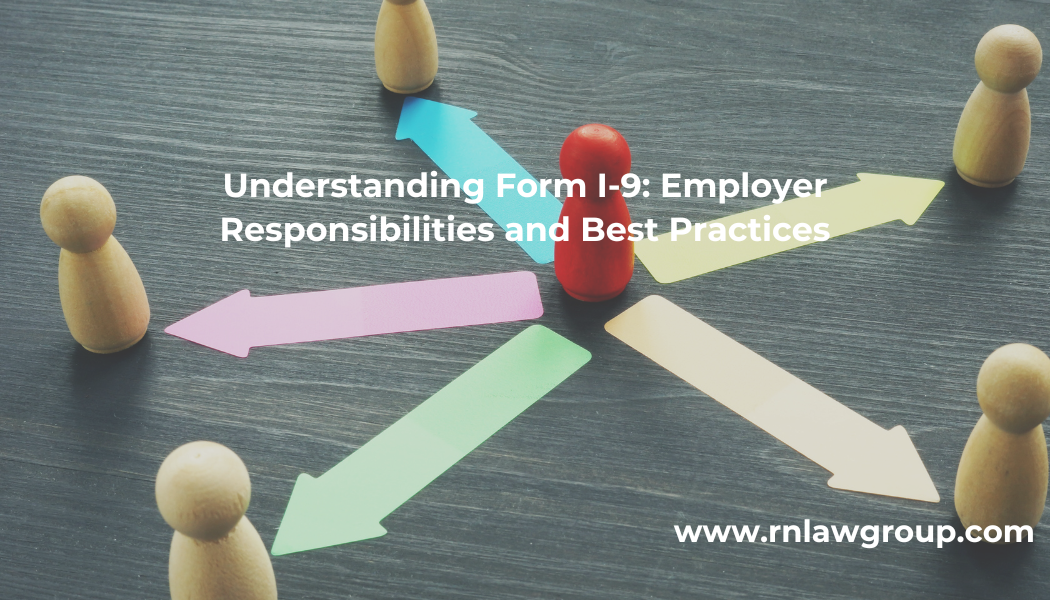
Understanding Form I-9: Employer Responsibilities and Best Practices
In the United States, employers have a critical responsibility to verify that their employees are authorized to work in the country. To support this effort, U.S. Citizenship and Immigration Services (USCIS) developed Form I-9, an essential document used to confirm an individual’s eligibility to work in the U.S. Federal law mandates that employers complete a Form I-9 for every new hire, helping to protect both employers and employees from the serious consequences of unauthorized employment.
What is Form I-9?
The Immigration Reform and Control Act (IRCA) requires all U.S. employers to verify the identity and employment authorization of their workers. Form I-9 is a four-page document designed for this purpose. It must be completed accurately and consists of three key sections:
Section 1: Employee Information and Attestation
Completed by the employee, this section gathers basic personal information such as full name, address, date of birth, and Social Security number. The employee must also declare their work authorization status by selecting one of the following:
- S. Citizen
- Noncitizen national of the U.S.
- Lawful permanent resident
- Alien authorized to work until a specified date
If applicable, employees must also provide their Alien Number/USCIS Number, Form I-94 admission number, or foreign passport number (and country of issuance). Finally, the employee must sign and date this section.
This section must be completed and signed by the employee no later than the end of the employee’s first date of employment. If necessary, a preparer or translator can assist the employee in completing Section 1. If a preparer or translator is used, a completed Supplement A is required.
While employees are responsible for completing Section 1, employers have the responsibility of reviewing Section 1 to ensure all fields are completed properly and that the employee has signed and dated the form.
Section 2: Employer Review and Verification
The employer must complete and sign Section 2 within three business days of the employee’s start date (the first day of paid work). The employer is responsible for:
- Reviewing the employee’s documents to verify their genuineness and assure the documents relate to the employee who has presented them.
- Recording the document title, issuing authority, document number, and expiration date.
- Signing and dating the form.
A list of acceptable documents can be found here: Form I-9 Acceptable Documents. In general, the employer must review the documentation in the employee’s physical presence. However, certain employers may be eligible to remotely examine employee documents under the alternative procedure authorized by the Secretary of Homeland Security.
Supplement B: Reverification and Rehire (formerly Section 3)
This section is used when an employee’s work authorization needs reverification, when rehiring an employee within three years of the original Form I-9 completion, or when an employee legally changes their name.
Common Mistakes When Completing Form I-9
Proper completion of Form I-9 is essential to protect both businesses and the U.S. workforce. Mistakes can expose employers to significant penalties, fines, and even legal action against the employer. Common errors include:
- Missing deadlines: Employees must complete Section 1 no later than their first day of employment. Employers must complete Section 2 within three business days of an employee’s first day.
- Incomplete or incorrect information: Employers must ensure all information provided is accurate and up-to-date.
- Accepting improper documents: Employers must verify that documentation is correct, unexpired, and directly related to the employee. Employers must ensure the documentation provided is sufficient to prove not only work authorization but identity.
- Failure to reverify temporary work authorization: Work authorization documents with expiration dates must be reverified before they expire.
- Failure to retain forms: Employers must retain each Form I-9 for three years after date of hire or one year after termination—whichever is later—and make them available for government inspection.
- Using outdated forms: USCIS periodically updates Form I-9, and the latest version must always be used.
Consequences of Improper Form I-9 Completion
Incorrect or incomplete Form I-9 compliance can lead to substantial penalties. Fines vary based on the nature and severity of the violation, and repeated offenses could even possibly result in criminal charges, including imprisonment. Employers may also be barred from government contracts and face reputational damage, harming relationships with clients, suppliers, and business partners. If there is a finding of discrimination against an individual, the employer may be ordered to provide back pay or ordered to hire the individual.
Best Practices for Form I-9 Compliance
Employers can avoid costly mistakes by implementing the following best practices:
- Understand the requirements: Know the timelines and acceptable documents for employment verification.
- Train staff: HR teams and hiring managers should be trained in proper Form I-9 completion, including how to identify acceptable documentation and how to avoid discrimination and non-compliance.
- Utilize electronic systems: Digital I-9 management tools can streamline the process and reduce human error.
- Develop a written I-9 policy: Establish clear procedures for completing forms and addressing discrepancies.
- Conduct regular audits: Periodic internal reviews ensure that all forms are complete, accurate, current, and compliant.
Conclusion
Complying with the Immigration Reform and Control Act and correctly completing Form I-9 is crucial for all U.S. employers. This process not only safeguards employers from legal and financial penalties but also protects employees and upholds the integrity of the American workforce. Seeking guidance from experienced attorneys can help employers maintain full compliance and avoid costly mistakes.
For over 25 years, Reddy Neumann Brown PC has assisted employers in navigating the complexities of Form I-9 compliance. Our firm conducts comprehensive audits and advises businesses on best practices to safeguard against noncompliance and protect their workforce.
You can speak with one of our immigration lawyers by contacting us online, calling our Houston business immigration office directly at 713-953-7787 or scheduling a consultation.
By: Jessica Palarca
Jessica Palarca is an attorney in Reddy & Neumann’s PERM Labor Certification Department where she assists clients in the beginning stages of the green card process.
Jessica earned her J.D. from the University of Houston Law Center in 2009 and was admitted into the Texas bar the same year. As the child of two immigrant parents, Jessica found her passion for immigration law early in her career. With over a decade of experience in both the private and non-profit sectors, she brings a different perspective to each case she handles. Through the years, Jessica has learned that to achieve the best possible results for each individual served, one must keep things simple and provide personalized attention and care to each case.

